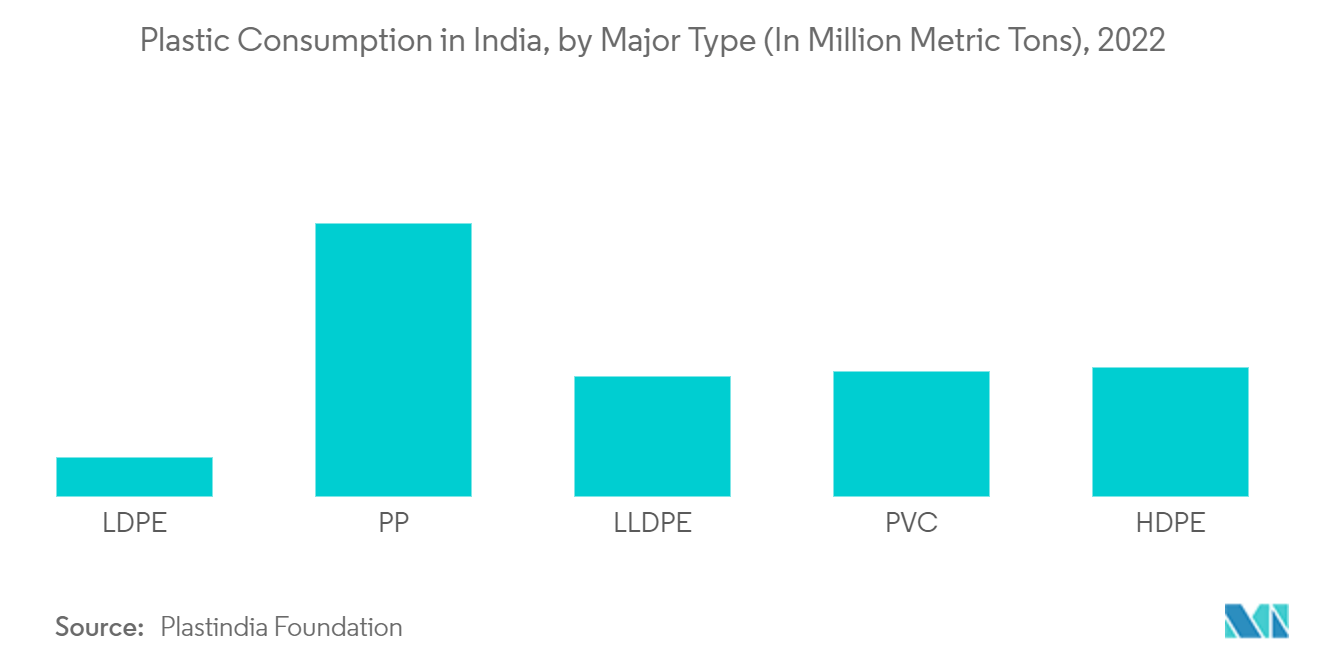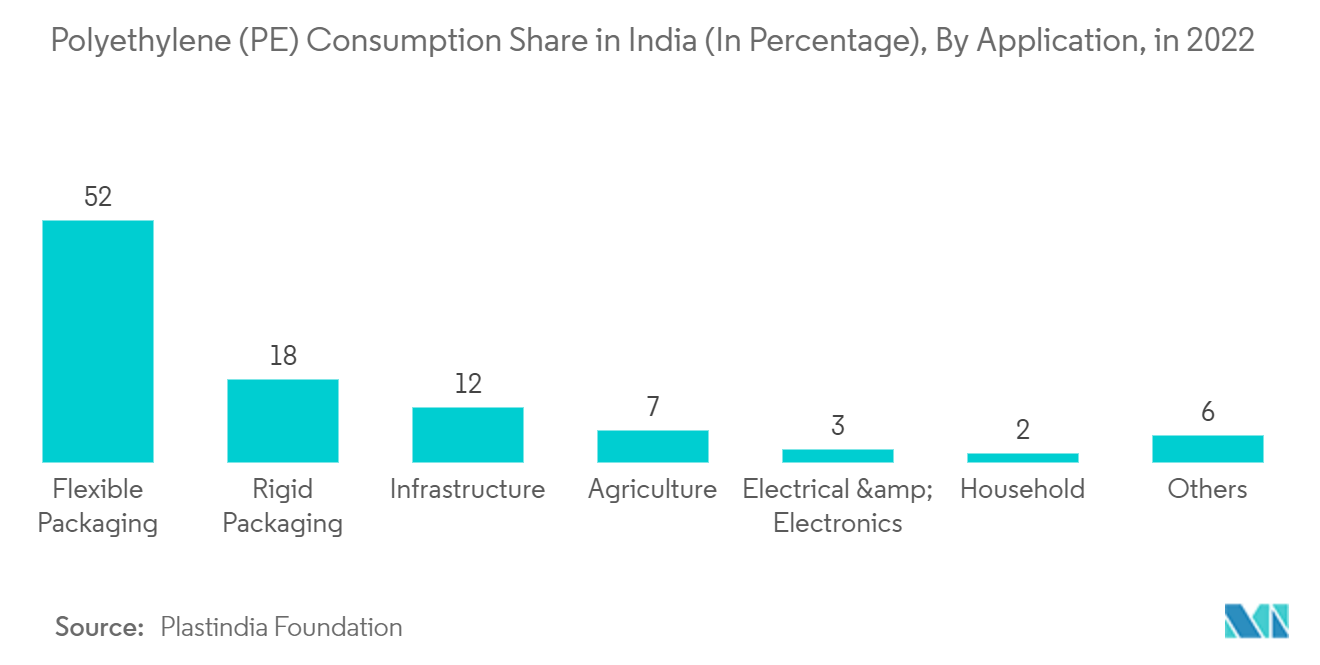Market Trends of Asia Pacific Plastic Packaging Industry
This section covers the major market trends shaping the APAC Plastic Packaging Market according to our research experts:
Cost-effectiveness & increased shelf-life of the product to drive the growth of the market
- Plastic packaging is cheaper and more convenient than packaging made from other materials. It is commonly used for multiple purposes in many industries, including food and beverages, healthcare, cosmetics, etc. Also, according to Plastindia Foundation, In India, there was a total demand for primary plastics in the range of 15 million tons (excluding engineering plastics and thermosets), with polyethylene varieties accounting for around six million metric tons of that total. During that year, polypropylene was the primary commodity plastic with an enormous demand.
- Also, according to the Flexible Packaging Association, flexible packaging is mainly used for food, contributing to more than 60% of the total market. The flexible packaging industry is witnessing healthy growth, as the industry was able to implement innovative solutions for the many packaging challenges it faced. According to IBEF, the Indian food and grocery market is the sixth-largest global, with retail contributing 70% of the sales. The Indian food processing industry accounted for 32% of the country's total food market, one of the largest industries in India, ranked fifth in terms of production, consumption, export, and expected growth.
- Additionally, EPS is lightweight, durable, thermally efficient, and versatile. It also includes exceptional shock-absorbing characteristics, making it ideal for storing and transporting fragile and expensive items, such as electronic equipment, wine, chemicals, and pharmaceutical products. The thermal insulation and moisture-resistant properties of EPS enable a shelf-life extension of perishable products, such as soft fruits, vegetables, and seafood.
- Moreover, according to the Australian Packaging Covenant Organization (APCO), the total amount of EPS packaging consumed in Australia every year is estimated to be more than 44,000 metric tons, broken down into applications of 20,000 metric tons for packaging of electrical and electronic products and 24,000 metric tons for another packaging.

Rigid Plastic Packaging to Hold the Significant Market Share
- Rigid plastic packaging containers provide unique benefits, such as high impact strength, stiffness, and barrier properties, which have expanded rigid plastic packaging in recent years. Also, new and improved tough PE resins are introduced due to sustained demand. For instance, Braskem launched a new polyethylene (PE) resin in the rigid packaging segment the previous year. Braskem provided the market with a new product option, HD1954M, which is a part of the Rigeofamily portfolio. High-density polyethylene offers a combination of high rigidity, 100% recyclable grade, good impact strength, and Environmental Stress Cracking (ESCR), rendering packaging optimization and productivity gains.
- The introduction of polyethylene terephthalate (PET) and high-density polyethylene (HDPE) polymers expanded plastic bottling applications. High-density polyethylene plastic bottles are among the popular packaging choices for the fresh juice and milk market.
- In the rigid packaging industry, PET is used for plastic bottles for soft drinks, water, juice, sports drinks, beer, mouthwash, catsup, salad dressing, food jars, and microwavable food trays. Also, PET is one of Japan's most widely used materials for manufacturing plastic bottles. PET bottles are also used for packaging carbonated drinks in the country. An average person in the country buys 183 PET bottles per year. Other packaging materials, such as HDPE and PP, are also witnessing rising adoption rates, with companies looking to attract more consumers by offering different products.
- Also, several companies are making strategic acquisitions to tap into the growing market of the plastic packaging industry. For instance, in the previous year, TricorBrausentered an agreement to acquire Cormack Packaging, expected to establish the former's footprint in New Zealand and Australia and serve the food and beverage, pharmaceutical, personal care, industrial, and household cleaning industries with rigid packaging.
- Packaging is India's primary polyethylene (PE) application in the last financial year. The flexible packaging segment accounted for 52 % of PE demand in the same year, while rigid packaging made up 18 % of the total market.

